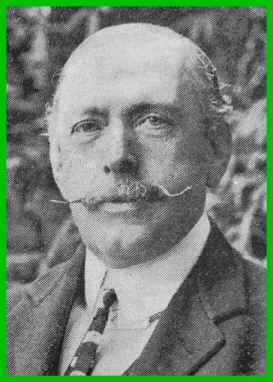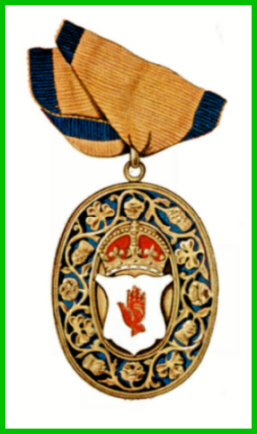





James was born in England on 16th December 1851; the son of Captain John Flannery (1814 - 1892) of Seacombe (or Egremont), Cheshire, and Elizabeth (née Kerr) daughter of James Kerr of Stranraer, New Brunswick, Canada.
James began his business career as an office boy under David Campbell, a Liverpool consulting engineer, and subsequently served a five years' apprenticeship in the Brittania Engine Works at Birkenhead. At the same time, he attended the evening classes of the Liverpool School of Science, and at the conclusion of his studies he was placed first in his year and awarded the Derby Prize. When this was presented to him by Sir Edward Reed, a former chief constructor to the Royal Navy, Reed offered him an appointment in his London office. This was accepted, and he resigned his position as draughtsman with Messrs. Fawcett, Preston & Co. He spent the next five years in the work of designing and inspecting machinery, varied with sea-going experience.
He then started in business on his own account as a consulting engineer and naval architect, and a little later founded the firm of Flannery, Baggally & Johnson. The firm eventually opened offices in London, Liverpool and Rotterdam. One of his earliest responsibilities was the design and supervision of a fleet of steamers for the Shell Transport Company, founded by Lord Bearsted. Improvements were effected in the use of liquid fuel in lieu of coal, and a new apparatus for that purpose was designed and carried into practice for the Shell Company's fleet. The result was s o successful that the use of liquid fuel was adopted in the Royal Navy and eventually became of supreme importance to the British Fleet.
In 1882, he married Edith Mary Emma (née Jenkyn) daughter of Osborn Jenkyn of Woodside, Ealing. There were two daughters, Kathleen and Enid, of the marriage, and a son Harold Fortescue Flannery, M.B.E., who later succeeded to the baronetcy on his father's death in 1943. The family resided at Gibson's Hill, Norwood, South East London in 1895.
On the death of Sir Edward Reed, Messrs. Flannery, Baggally & Johnson were appointed as consulting engineers and naval architects to the Crown Agents for the Colonies, the appointment resulting in the designing of a large number of vessels built specially for use in tropical climates and in the Dominions. He was a British Commissioner to the Brussels International Exhibition in 1897.
James was knighted by Queen Victoria on 14th January 1899 and was created a baronet by King Edward VII on 13th December 1904. He was granted a patent of arms in 1904 (illustrated on the top left corner of the homepage).
In addition to being chairman of Flannery, Baggally & Johnson Ltd., and Callender's Cable & Construction Co. Ltd., and of their respective associated companies, James was a director of Barclays Bank Ltd. and chairman of E.W. Tarry & Co. Ltd.
He was president of the Institute of Marine Engineers (1897 - 1898); he was a founder-member and first president of the Society of Consulting Marine Engineers and Ship Surveyors (1920 - 1922), and was re-elected president (1933 - 1934); he was a former president of the Liverpool Shipbuilders Guild and the Junior Institution of Engineers; a member of the Institution of Civil Engineers, the Institution of Mechanical Engineers and the Institution of Naval Architects. He had been connected with Lloyd's since 1880, when he became an annual subscriber, and he had been an associate since 1893. He was also a member of the Technical Committee of Lloyd's Register of Shipping.
James was a member of the Royal Dockyard Committee on Labour, and an Examiner in Engineering to City of London College. He often appeared in the High Courts as an expert witness, and Lord St. Helier once referred to him as the undoubted leader of his profession.
He was elected an M.P. for West Yorkshire (Shipley Division) 1895 - 1906. Standing for the Liberal Unionists, he polled 5,999 in 1895, 6,284 in 1900, but lost his Yorkshire seat in the 1906 election when he unsuccessfully contested the Cardiff District. The all-male electorate was 15,969 in 1905. His family resided at Wethersfield Manor, Essex, and 5 Somers Place, Hyde Park in 1904.
He was elected an M.P. for East Essex (Maldon Division) 1910 - 1922. Standing for the Liberal Unionists, he polled 5,691 in January 1910 and 5,386 in December 1910. Standing for the Coalition Unionists, he polled 8,138 in 1918 out of an electorate of 28,127. He resigned from Parliament in 1922 owing to pressure of business.
During his parliamentary career, he persistently advocated a strong Navy, and it was due to the efforts of Lord Charles Beresford and a group of M.P.s, of which James was one, that the policy advocated by many in the years before the First World War of reducing the Navy for the sake of economy was defeated.
In local affairs, he was Justice of the Peace for Essex, Kent, Surrey and London, a Lieutenant for the City of London, and Lord of the Manor of Wethersfield, Essex.
He died in Essex on 5th October 1943.
[his portrait is illustrated above; courtesy of his grandson, David Lindsay; flanked by the badges of knight bachelor (left) and baronet (right)]